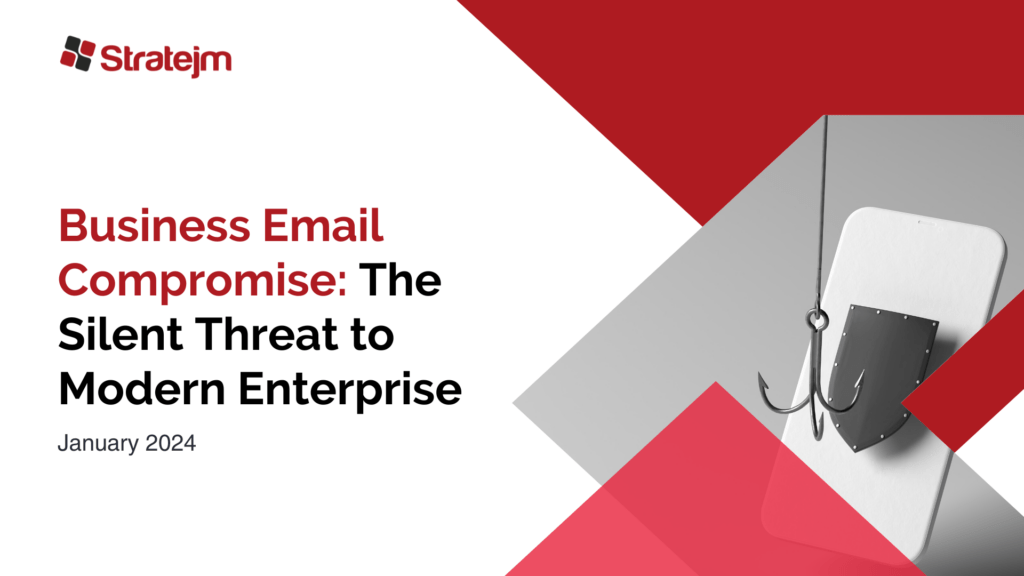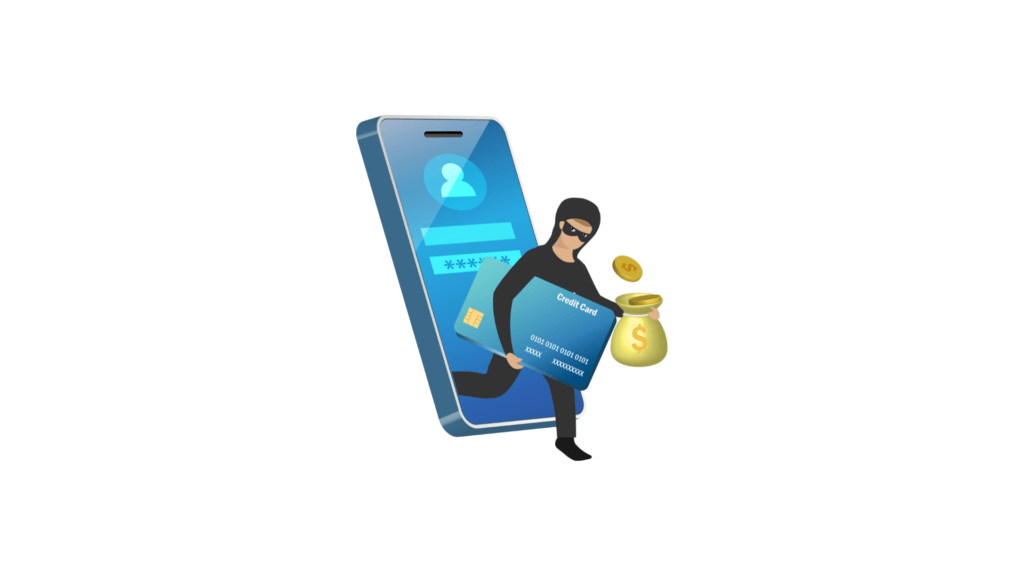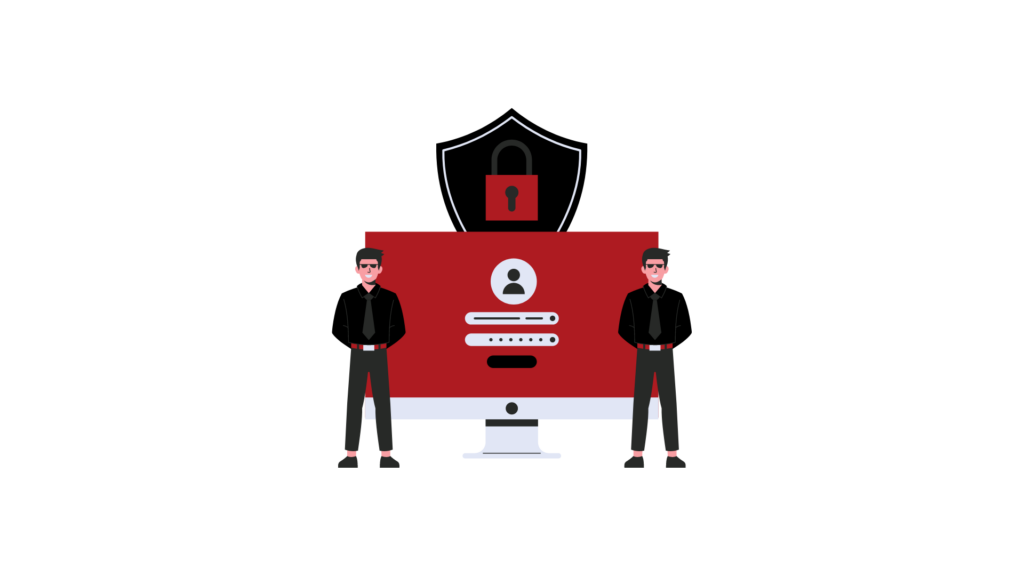 Business Email Compromise: The Silent Threat to Modern Enterprises
Business Email Compromise: The Silent Threat to Modern Enterprises
In an era marked by rapid technological advancements, the threat landscape for businesses is continually evolving. One insidious threat that often operates in the shadows, yet carries devastating consequences, is Business Email Compromise (BEC). At Stratejm, we recognize the urgency of staying ahead in the cybersecurity game to protect modern enterprises from such sophisticated digital attacks. The FBI Internet Crime Complaint Center (IC3) recently released a Public Service Announcement, revealing nearly $51 billion in exposed losses attributed to BEC.
In this blog post, we delve into the nuances of BEC, why it poses a significant risk, and what steps enterprises can take to safeguard against it.
What is Business Email Compromise?
 BEC is a form of cyber fraud that goes beyond traditional hacking techniques. It involves unauthorized access or impersonation of business email accounts, leveraging social engineering and deception to manipulate companies and their employees. The primary goal is to trick individuals into performing financial transactions or divulging sensitive information.
BEC is a form of cyber fraud that goes beyond traditional hacking techniques. It involves unauthorized access or impersonation of business email accounts, leveraging social engineering and deception to manipulate companies and their employees. The primary goal is to trick individuals into performing financial transactions or divulging sensitive information.
Unlike some cyber threats that rely solely on technical prowess, BEC exploits human psychology and trust within organizational communication channels.
Business Email Compromise attacks usually involve some form of phishing. For example, a high-ranking executive might be targeted with a Remote Access Trojan (RAT) used to harvest credentials and other data. Once access is gained, cybercriminals can use these high ranking accounts to complete a wire transfer request to a fake supplier, often stressing the urgency and confidentiality of the transaction as to not raise suspicion.
Why Should Businesses Be Concerned?
Financial Losses
The financial toll of BEC scams is staggering, with businesses globally counting losses in the billions. Attackers, often posing as high-ranking executives or trusted partners, manipulate employees into transferring funds or making financial decisions under the guise of legitimate transactions. These fraudulent activities can lead to irreparable financial damage for the targeted organizations. In fact, out of the $3.5 billion in damages from cybercrime reported by the FBI in 2019, 50% comes as a result of BEC.
Data Breach Risks
Beyond immediate financial losses, BEC incidents can result in significant data breaches. When attackers gain access to sensitive information through compromised email accounts, they may exploit it for various malicious purposes. This could include stealing intellectual property, customer data, or other confidential information, posing a serious threat to the organization’s data integrity.
Reputational Damage
Falling victim to a BEC attack not only affects the bottom line but also tarnishes the reputation of the targeted company. Trust is hard-earned and easily eroded, and customers, partners, and stakeholders may lose confidence in an organization that has been compromised. Rebuilding trust takes time and concerted effort, making prevention and proactive cybersecurity measures crucial.
How to Safeguard Against BEC
 Employee Training
Employee Training
Investing in comprehensive cybersecurity training for employees is a fundamental step in mitigating the risk of BEC. Awareness programs should educate staff on recognizing phishing attempts, verifying email authenticity, and understanding common tactics used by attackers. By fostering a vigilant and informed workforce, organizations can create a robust first line of defense against BEC.
Multi-Factor Authentication (MFA)
Implementing multi-factor authentication is a critical measure to enhance email security. MFA adds an extra layer of protection by requiring users to authenticate their identity through multiple means, such as a password and a temporary code sent to their mobile device. This makes it significantly harder for unauthorized individuals to gain access to email accounts even if passwords are compromised.
Email Authentication Protocols
Enforce email authentication protocols, such as Domain-based Message Authentication, Reporting, and Conformance (DMARC), to prevent email spoofing. DMARC helps verify the authenticity of incoming emails, reducing the likelihood of attackers successfully impersonating trusted entities within the organization.
Regular Security Audits
Conducting regular security audits of email systems can help identify vulnerabilities and unauthorized access. This proactive approach allows organizations to detect and address potential issues before they escalate into full-blown BEC incidents.
Generative AI Security with Slashnext
Raising awareness among employees and implementing MFA are great ways to mitigate the risk posed by BEC, but with attackers growing more and more sophisticated, Stratejm recommends using a dedicated solution to stop social engineering attacks in their tracks.
Enter Slashnext, a cutting edge cybersecurity platform that leverages the power of Generative AI to detect, predict and stop spear phising, BEC, smishing and other zero-hour social engineering attacks in more than 30K email, mobile and web messaging apps.
Unparalleled in accuracy and efficiency, Slashnext’s HumanAI delivers powerful protection that stops credential stealing, BEC, spear-phishing, legitimate link compromise, social engineering scams, ransomware and malware in real-time with fast 99.9% detection rates and one in 1 million false positive rate for confidence in remediation.
Conclusion
Business Email Compromise is a silent yet potent threat that demands the attention of modern enterprises. By understanding the tactics employed by attackers and implementing proactive cybersecurity measures, organizations can significantly reduce the risk of falling victim to BEC. Staying informed, investing in employee training, and leveraging advanced security technologies are essential components of a robust defense strategy.
In the ever-evolving landscape of cybersecurity, vigilance and preparedness are the keys to safeguarding against the silent threat of Business Email Compromise.
